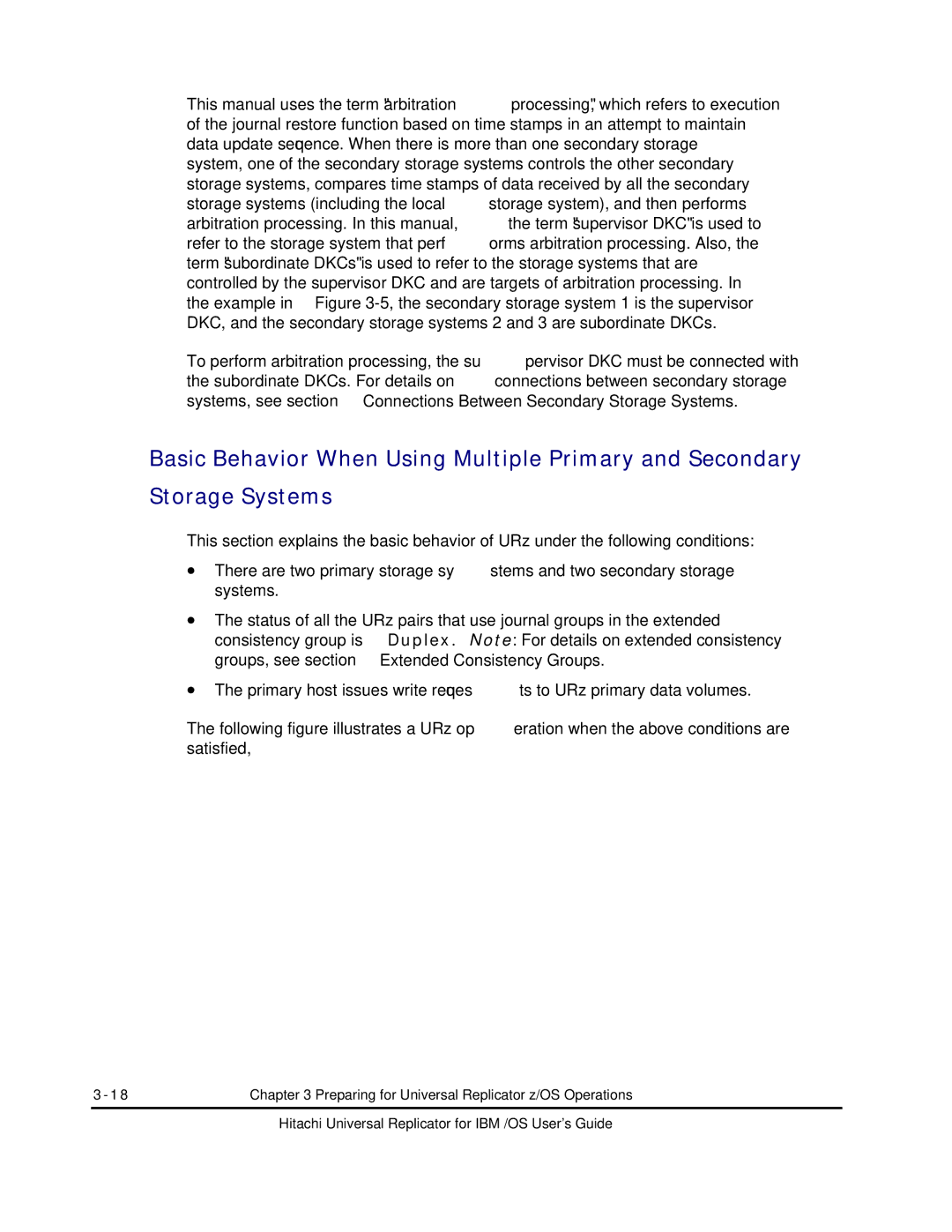This manual uses the term "arbitration processing", which refers to execution of the journal restore function based on time stamps in an attempt to maintain data update sequence. When there is more than one secondary storage system, one of the secondary storage systems controls the other secondary storage systems, compares time stamps of data received by all the secondary storage systems (including the local storage system), and then performs arbitration processing. In this manual, the term "supervisor DKC" is used to refer to the storage system that performs arbitration processing. Also, the term "subordinate DKCs" is used to refer to the storage systems that are controlled by the supervisor DKC and are targets of arbitration processing. In the example in Figure
To perform arbitration processing, the supervisor DKC must be connected with the subordinate DKCs. For details on connections between secondary storage systems, see section Connections Between Secondary Storage Systems.
Basic Behavior When Using Multiple Primary and Secondary Storage Systems
This section explains the basic behavior of URz under the following conditions:
•There are two primary storage systems and two secondary storage systems.
•The status of all the URz pairs that use journal groups in the extended consistency group is Duplex. Note: For details on extended consistency groups, see section Extended Consistency Groups.
•The primary host issues write requests to URz primary data volumes.
The following figure illustrates a URz operation when the above conditions are satisfied,
Chapter 3 Preparing for Universal Replicator z/OS Operations |
